Dated 4 June 2004: Hoshi no Koe
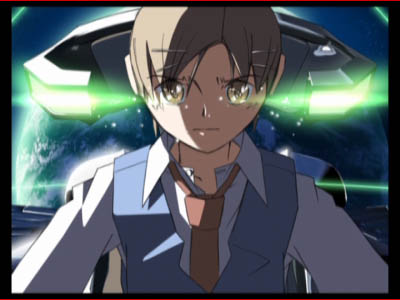
Nagamine Mikako from Hoshi no Koe
One of the best pieces of anime I've seen in recent memory is Hoshi no Koe, also known by its English name as Voices of a Distant Star. I don't know if I can really do it justice in a brief review through an anime blog, but I'll give it a shot.
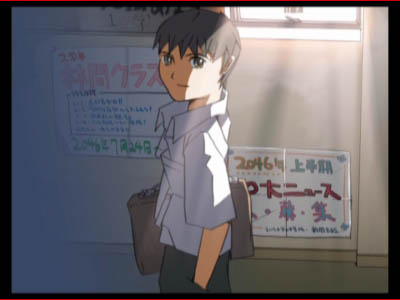
Terao Noboru from Hoshi no Koe
Voices of a Distant Star is a 30-minute short film by Makoto Shinkai. It is an earnest love story set in 2046, during an interstellar war. Two young friends separate when one of them becomes a mecha pilot with the Earth's expeditionary force sent out to bring the war to the invading aliens.
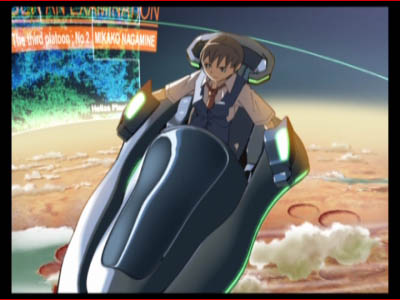
Mikako in the cockpit of her mecha
The fifteen-year-old mecha pilot, Nagamine Mikako, and her Earth-bound friend, Terao Noboru, can only communicate with each other through cell phone text messages. As the expeditionary force travels farther and farther through space, the lag between their communications grows longer. Messages that once arrived nearly instantaneously eventually take months to arrive, then years.
Despite its short length, Hoshi no Koe is very successful in conveying the longing and despair of the separated couple. It invokes something of a Flowers for Algernon effect as the story unfolds. We see Mikako's excitement. We see her anxiety. And we see her trepidation grow as she travels farther and farther from Noboru, knowing that it will be years before he receives her messages.
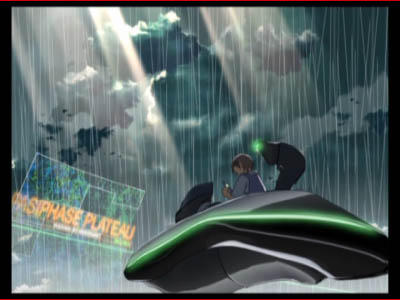
Mikako
The communication medium that director Makoto Shinkai uses in Voices of a Distant Star, cell phone text messages, is well chosen. The pervasiveness of electronic communication today has created a world where people take communication for granted. We can be separated by thousands of miles, yet still be able to reach our loved ones with essentially no effort. Voices of a Distant Star acknowledges that not so long ago, such distances could only be closed after months of perilous travel; messages that were sent were often never received at all.
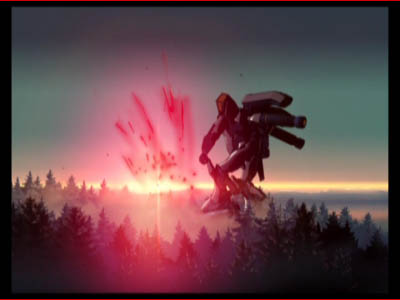
Mikako's mecha in battle
By showing the extraordinary wait required between each text message, Hoshi no Koe forces the viewer to consider how valuable each message—each word—is to the young couple. Likewise, the relativistic effects make each message more poignant.
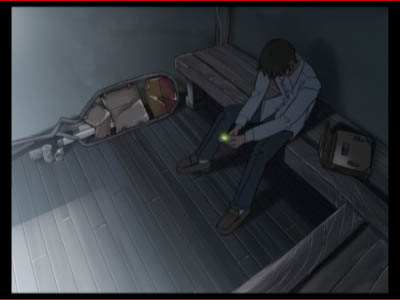
Noboru
Back on earth, Noboru's anxiety comes in a different form. He is trapped by The World, and by time. He feels the burden of the years between them, whereas Mikako feels the burden of the distance between them. Noboru has to live his life, joylessly meet other people, and stoically grow old, all without knowing if he'll ever get another message from Mikako—without knowing her ultimate fate—even whether or not she died in battle over a decade ago.
Despite its somewhat depressing theme, Voices of a Distant Star is buoyed by its equally powerful theme of hope. This is Voices of a Distant Star's great triumph. Despite all the years and despite the countless miles, Mikako and Noboru maintain sparks of hope. They understand that each message may be the last, but they never quite give up, and the messages themselves are not goodbyes.
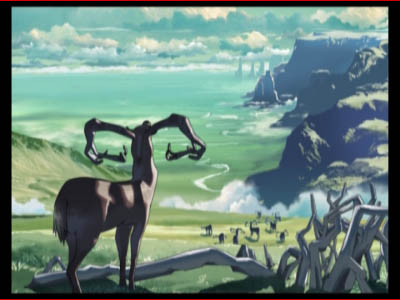
An alien planet
Even from only a purely technical perspective, Hoshi no Koe is excellent. The artwork and visuals are striking, and the music is beautiful. The animation is captivating, with excellent CGI battles that succeeds in this 2002 production in ways VanDread cannot match. The voice acting in Hoshi no Koe is also good, although further explanation is necessary regarding this point.
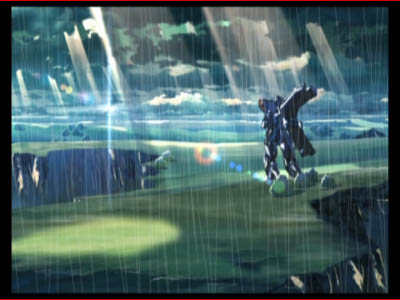
Earth mecha on an alien planet
There are two Japanese audio tracks, and one English one. One Japanese track is performed by professional voice actors, and is polished and skilled. The second Japanese track is voiced by the director, Makoto Shinkai, and his fiancee, Mika Shinohara. The acting is different, but not at all unskilled. The director gives Noboru a younger sounding voice, and has the advantage over the professional voice in that it sounds less, well, professional, if that makes any sense. He sounds more like a kid than a seiyuu, even though the professional's acting is better.
Mikako, as played by the director's fiancee, sounds similar to the professional, but is also a bit more subdued. One line in particular, "I don't understand," is more heartfelt coming from the professional voice actress, whereas the line as spoken by the director's fiancee is more level—almost matter-of-factly.
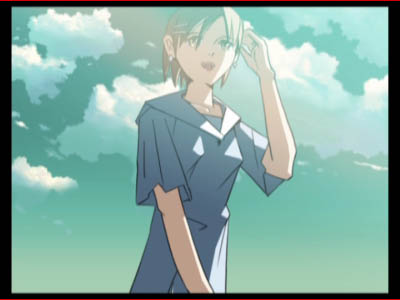
Mikako
I am generally disinclined to like English anime dubs, for a myriad of reasons, but people who usually watch dubs instead of subtitled works will probably like the English dub of Voices of a Distant Star well enough.
Personally, I felt that the English voice for Noboru sounded too mature for the part, but I suppose that's a relatively minor complaint given the broad age range demanded by the role.

An older Noboru
The English-language Mikako has kind of a raspy, smart alec, "tough grrl" voice. This changes the character a bit from the original vision, and I don't like it, but the acting is otherwise good.
As with most English dubs, they pronounce the Japanese names incorrectly. I don't know why. It's not as if they sound any more western this way.
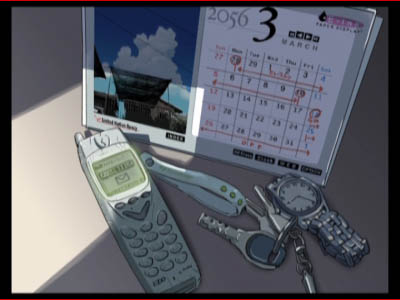
The older Noboru's cell phone
I am disappointed that the English dub took creative liberties with the script. The changes are subtle, but I think the deviations change the characters and the distort the overall feel of the story. For example, in the original version, Mikako is a bit evasive and has some difficulty telling Noboru that she has joined the expeditionary force. Someone watching it for the first time with no knowledge of the story could easy miss the subtle inferences that reveal Mikako's intentions. In the English script, she pretty much just comes right out and says it. It makes the English-language Mikako more assertive, and the viewer readily accepts her role as a mecha pilot, whereas in the original script, the viewer is left wondering about her motivation for embracing these sacrifices, particularly in the version voiced by the director's fiancee.

Noboru and Mikako
Voices of a Distant Star is available on DVD in North America from ADV Films with about 75 minutes of extras, including the short film, She and Her Cat. It can be easily found for less than $20, and I highly recommend it.


